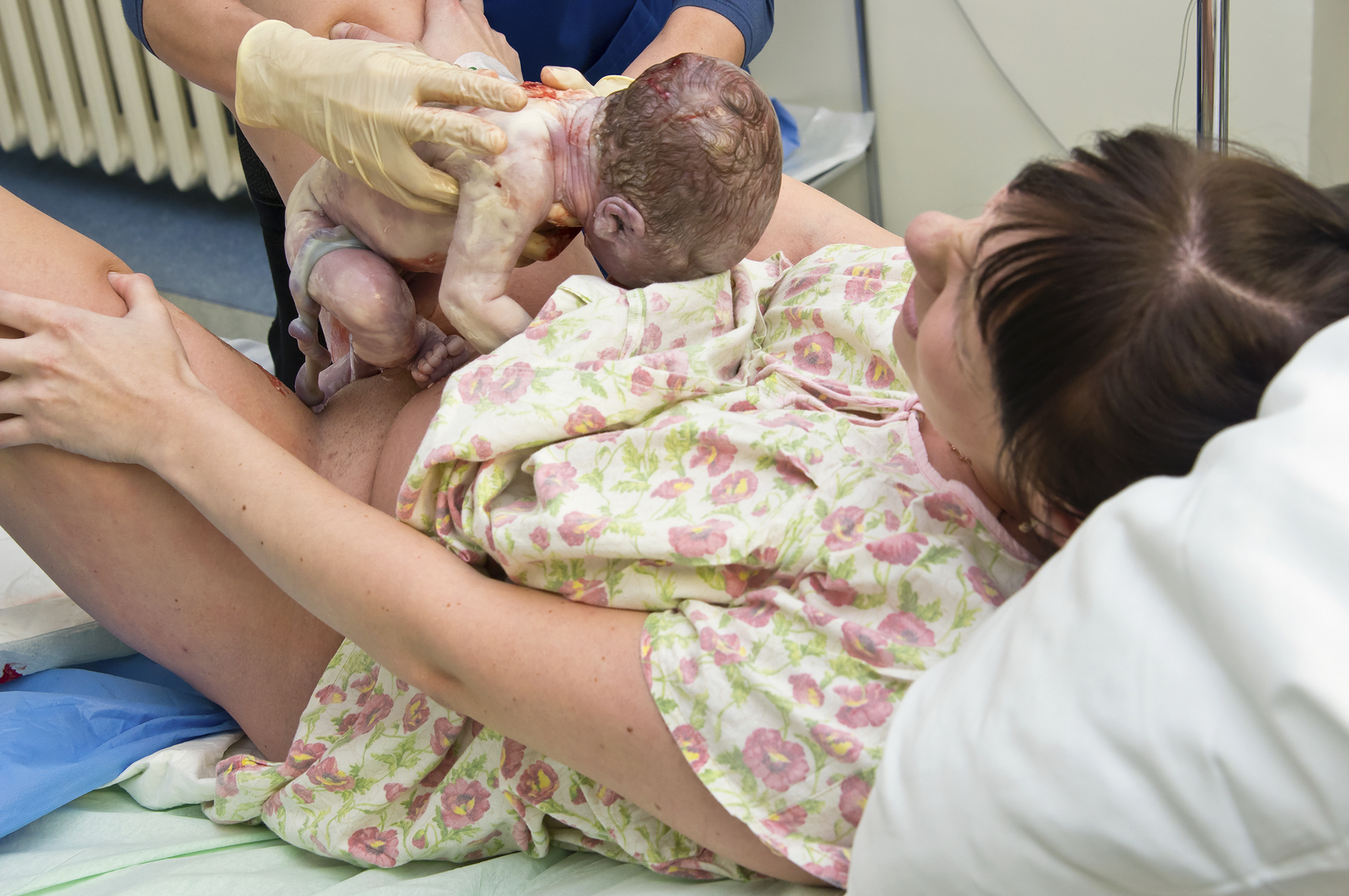Vaginal Tearing During Childbirth: Perineal Massage to Reduce Cuts

The jury is still out on if perineal massage truly prevents tearing during labor, but if it doesn’t hurt, then why not go for it?
Our bodies are meant to birth babies. They will stretch and work to fit a baby through the birth canal and bring him into the world. Even though you know this, it can still be quite scary to think about tearing -or worse, having an episiotomy - during birth. Again, the body is meant to birth – and is built to withstand small, natural tears. But there are many midwives, doctors, and birth-junkies who all swear that perineal massages throughout the end of pregnancy will help prevent the need of an episiotomy during labor.
The perineum is the muscle between the vagina and the anus. Its job is to stretch and allow your baby through the birth canal. You may feel an extreme burning sensation, known as “The Ring of Fire” while your baby passes over this area. Let me tell you, that ring of fire is INSANE. I have birthed 5 babies and still remember how bad it was with my first. I remember screaming, “IT BURNS!” and my husband later telling me he wanted to start singing Johny Cash. (Jackass) Needless to say, I massaged my perineum for each pregnancy after that.
PERINEAL MASSAGE
You can massage yourself, or your partner can do it. I suggest the latter of the two options, as then you can lay back and practice your relaxation while he is ‘stretching’ you. I was told to start around 34 weeks pregnant and to massage daily for 10 minutes (if possible). There is nothing wrong with this being your foreplay into an evening of third-trimester sex. Remember just how great sex is for you! You need to be relaxed before the massage starts. Some moms enjoy to warm the area first with a compress, but that isn’t necessary. You do need a natural oil – vitamin E, coconut, almond, or olive work well – and should stay away from anything scented, jelly-textured or containing chemicals. The oil is needed as lubrication. According to Midwife Matters, a perineal massage is performed as follows: First:- Empty your bladder completely
- Prop your hips up
- Massage the oil into the tissues of the perineum and just inside the vagina. Pay special attention to any scar tissue from past deliveries.
- Put your thumbs (or have your partner put both index fingers) about 2 inches into the vagina and press downward toward the rectum. While maintaining a steady pressure, the fingers should be moved upward along the side of the vagina in a rhythmic “U” or “sling” type of movement. Be sure to avoid rubbing the urinary opening, which is at the top of the vagina.
- As you massage each day, your tissues should relax and stretch. Gently stretch the vaginal opening as wide as possible each time until you feel a tingling or burning sensation. This will help you recognize the feeling that you will have when the top of your baby’s head begins to show during delivery.
- Hold this stretch, without pain, for 45 to 60 seconds and then release. Massage with more oil, stretch again to the maximum hold, then release.
- In the beginning, your perineum will feel tight, but with time and practice, the tissues will relax and stretch. If you do the massage faithfully, you/your partner will be able to insert more fingers into the vagina as your perineum becomes more elastic.
- Do a Kegel exercise (tighten the pelvic floor muscles) and feel how strong the muscle is. Feel how difficult the stretching is when you are tensing the muscles of the pelvic floor. Consciously release them as you do the massage. Remember to do Kegel exercises before and after your baby is born to improve muscle strength and tone.
- This massage should not be painful. If you have any problems, talk with your doctor.

Other ways to help prevent tearing during labor:
- Pushing while squatting or laying on your side (not on your back).
- Relaxed pushing
- Letting your body guide you through pushing, not the other way around.
- Pushing while lying on your back, especially with your legs in stirrups.
- Having medical interventions and an instrument-assisted birth (forceps or vacuum).
- The baby is in an abnormal position.
- Prolonged pushing.
- Having an episiotomy.







